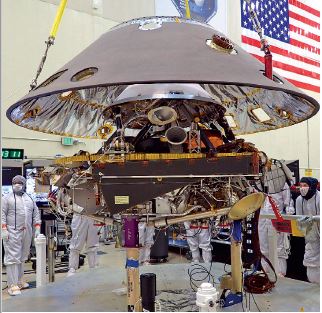U.S. Space Industry Employment
Trends and Events Affecting U.S. Employment
2019 TSRQ1 – Workforce: U.S. Space Workforce


The global space industry employs hundreds of thousands of highly-skilled individuals to design, produce, and operate cutting-edge technology. This workforce, in turn, contributes to thriving local economies, with clusters of innovative companies and service support industries. Understanding trends . . .
Workforce: Space Workforce – TSR 2015
2014 – Trends and Events Affecting U.S. Employment
While trends in employment levels varied, wages grew across almost all sectors from 2008 to 2013, even accounting for inflation. In fact, the two industry sectors with the greatest percentage decreases in workforce size were those with the greatest increases in real wages. Average salaries for Satellite Telecommunications increased by ##%.
2013 – Trends and Events Affecting U.S. Employment Snapshot
Analysis of trends in the individual industry classifications making up the total U.S. space workforce shows decreases across all sectors over the past year, though losses were not evenly distributed. The greatest percentage decline from 2011 to 2012, ##%, occurred in Other Guided Missile and Space Vehicle Parts, representing a loss of approximately ## jobs.
2012 – Trends and Events Affecting U.S. Employment
Trends among the six sectors examined have remained fairly consistent over time, with the Guided Missile and Space Vehicle Manufacturing and Federal Space Research and Technology categories increasing over periods of 1, 5, and 10 years.
2010 – Trends and Events Affecting U.S. Employment – Snapshot
Though the U.S. workforce has remained robust over the past decade, the future of the space industry in the United States deserves careful analysis and consideration. The workforce is likely to be affected by the retirement of the Space Shuttle and recent changes in NASA’s human spaceflight program.
2009 – Trends and Events Affecting U.S. Employment – Snasphot
From 2004 to 2008, nearly four U.S. space jobs were added for every one that was lost. During this period, employment in every sector of the U.S. space industry recorded by the BLS grew, except for satellite telecommunications. The bursting of the telecom bubble led to a decline in U.S. satellite telecommunications jobs from ## in 2001 to ## by 2004, a contraction of nearly 24%.
2008 – Trends and Events Affecting U.S. Employment
The estimate of U.S. space industry core employment calculated in The Space Report 2009 is derived from the total of the most recent workforce numbers from the ## North American Industry Classification System (NAICS) codes in Exhibit 4b, below. As Exhibit 4c shows, ## Americans worked in the space industry in 2007.
2007 – Trends and Events Affecting U.S. Employment
There were ## individual establishments, or workplaces, engaged in space activities located throughout the United States in 2006. In fact, the number of space industry establishments nationwide has been increasing every year since 2003, rising by ##% during that period.